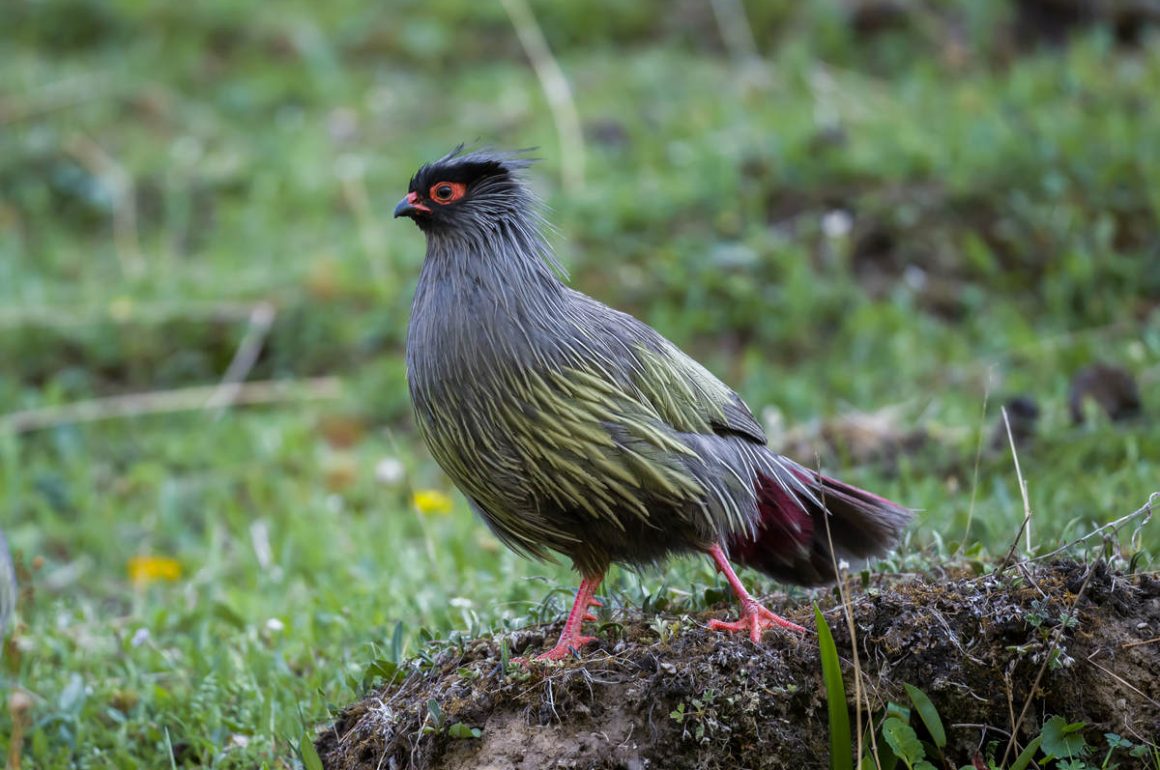
The Blood Pheasant gets its name from the crimson-colored streaks on its body – which apparently to some rather weird or overly imaginative people look like blood.
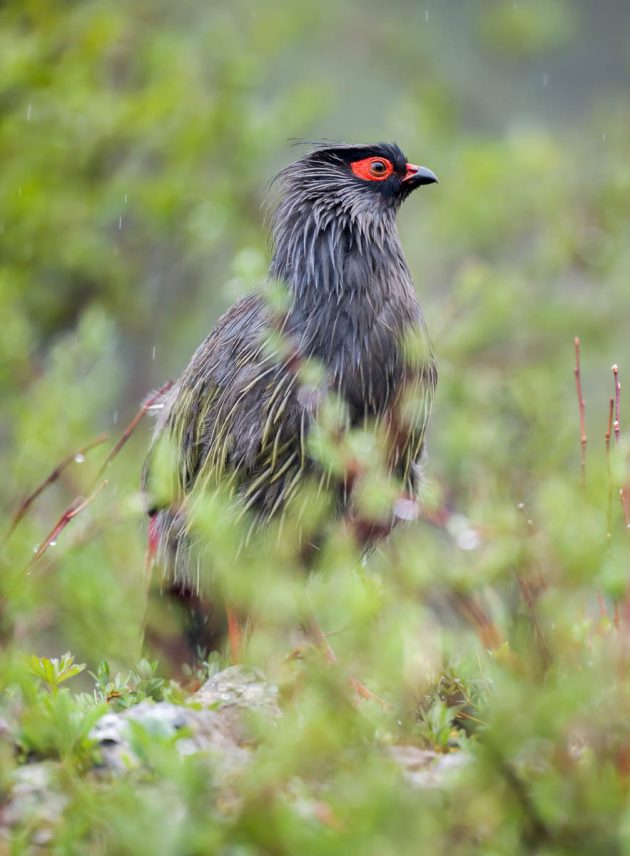
The Latin species name cruentus, “blood-stained” has the same background
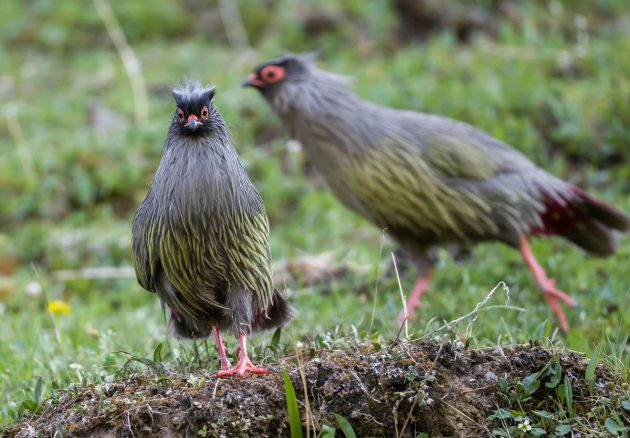
Blood Pheasants mainly feed on mosses – not many bird species do this as mosses are not very nutritious. But it gets them a paper in the Journal of Bryology (bryology is the study of mosses and liverworts – I will not pretend I knew this before writing this post).

When I showed a photo of the Blood Pheasant to a German hunter, he complained that this pheasant has “no tail”. And eBird calls it a “chunky partridgelike pheasant” – same gist, I guess.
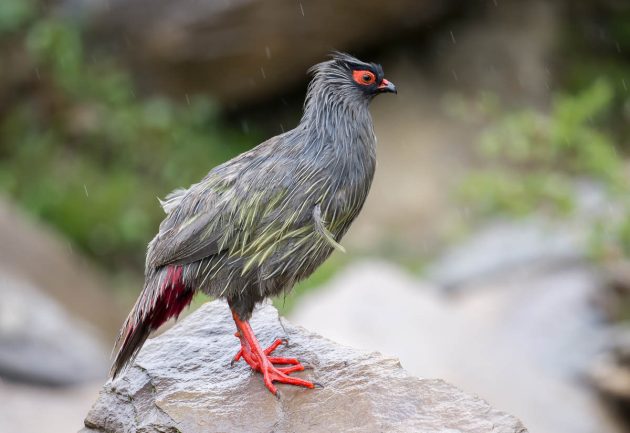
In winter, Blood Pheasants form flocks that are relatively harmonious inside but may fight with other flocks.
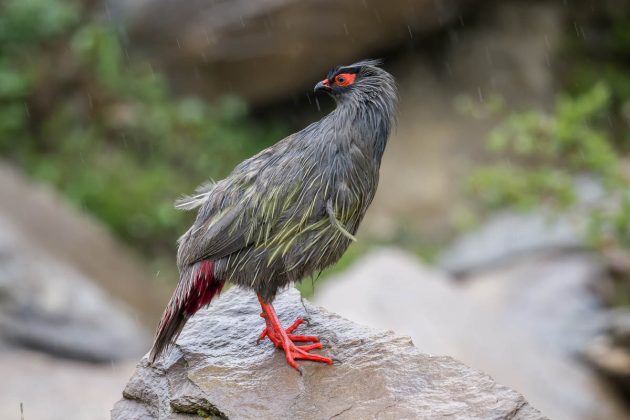
One paper identified the number of flocks in their research area “by tracing their tracks in the snow”. Very Cowboys and Indians.
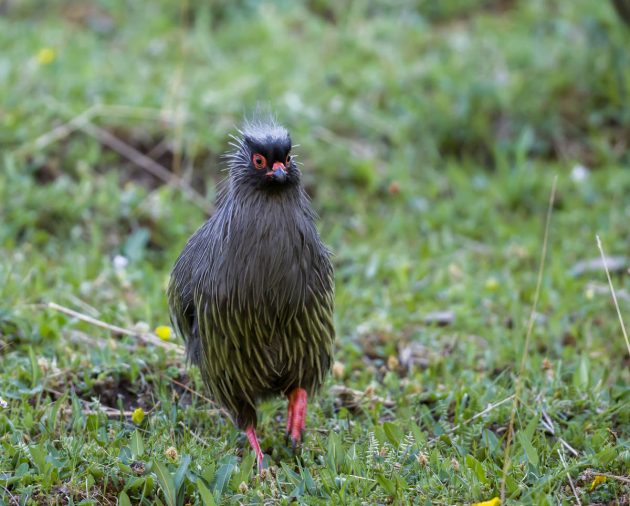
What are their criteria for selecting real estate? Apparently, they prefer positions lower in the slopes, a bit further away from water, with sparse and low shrubbery, and half-sunny, half-gloomy light. Pretty selective. The paper describing this then daringly suggests that these preferences might be related to food availability.
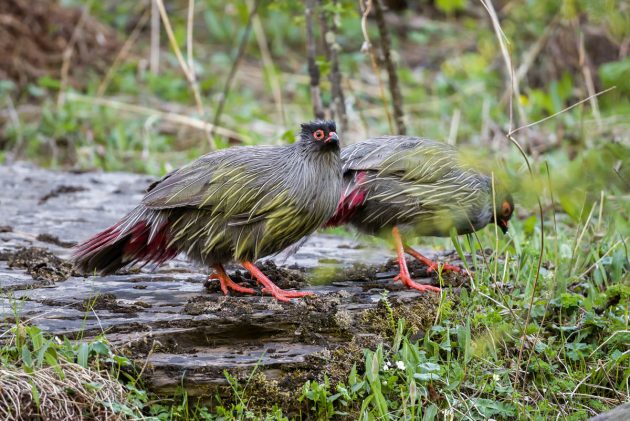
One of the threats to the Blood Pheasant comes from overgrazing by cattle. So, researchers looked at the habitat use of Blood Pheasants as related to the presence of livestock. To their surprise, they found a positive correlation between the presence of blood pheasants and livestock in the breeding season, which they then sort of explained away by citing “similar habitat preferences”.
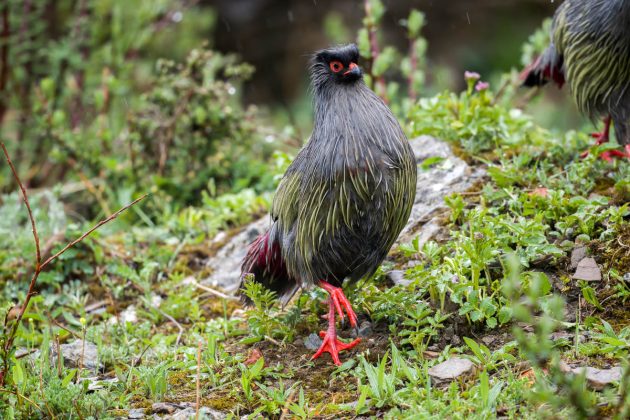
Blood Pheasants are monogamous, and they seem to have some sort of work-sharing arrangement. Well, the female (shown below) does all the incubation (source) …
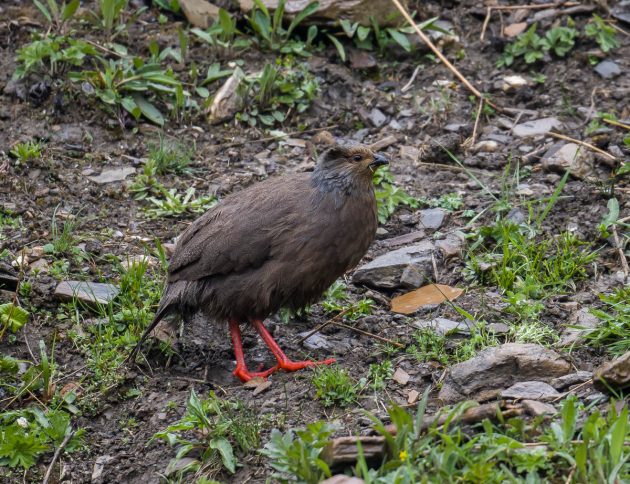
… while the male spends more time watching out for potential dangers during pre-incubation and incubation, allowing the female to spend more time on feeding, preening, and dusting (source).
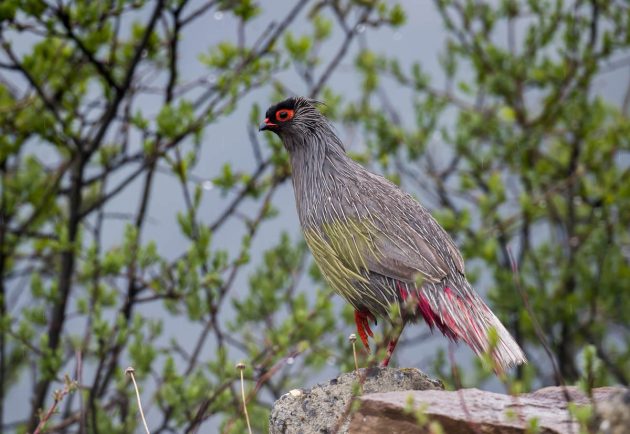
During incubation, the females typically leave the eggs once per day for a duration of about 7 hours (source), during which the temperature of the eggs drops to below 10 degrees Celsius for a few hours. This does not seem to hurt the development of the chicks.
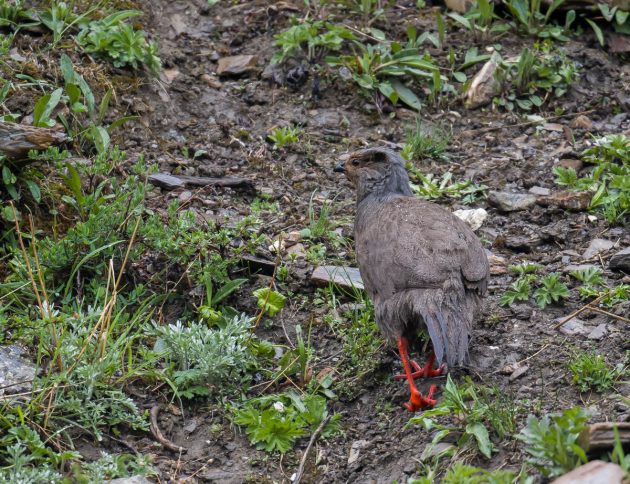
And yes, there is a paper on the complete mitochondrial genome of blood pheasant. Yawn.
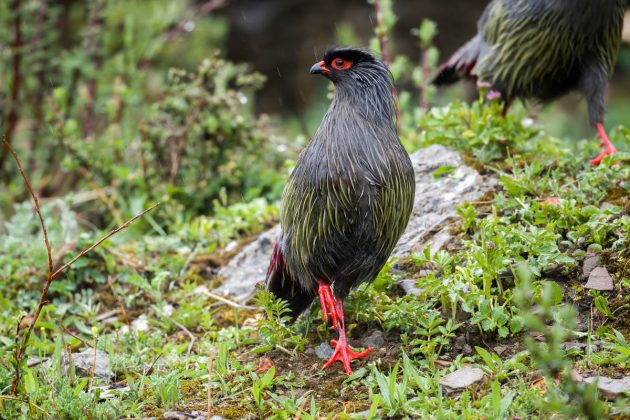
To end the post, I recommend listening to “Blood Soup” by Yeah Yeah Noh. Probably not containing Blood Pheasant blood, though. But an excerpt from “Train to Kansas City”, a song also covered by the Shop Assistants. Or if you like Kansas City but dislike trains, you can listen to “Kansas City” by Okkervil River. Or – if your preferences go in the opposite direction – choose “Not in Kansas” by The National. This song mentions R.E.M., so the last link here is to “Oh My Heart“.


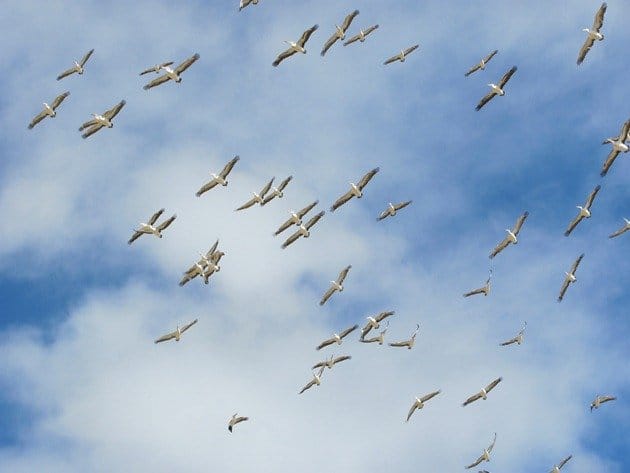
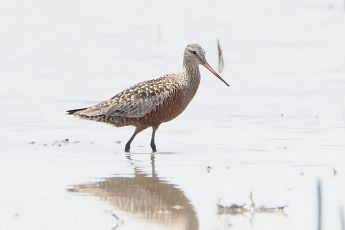


 New writers welcome – please contact us for details.
New writers welcome – please contact us for details.
















Leave a Comment